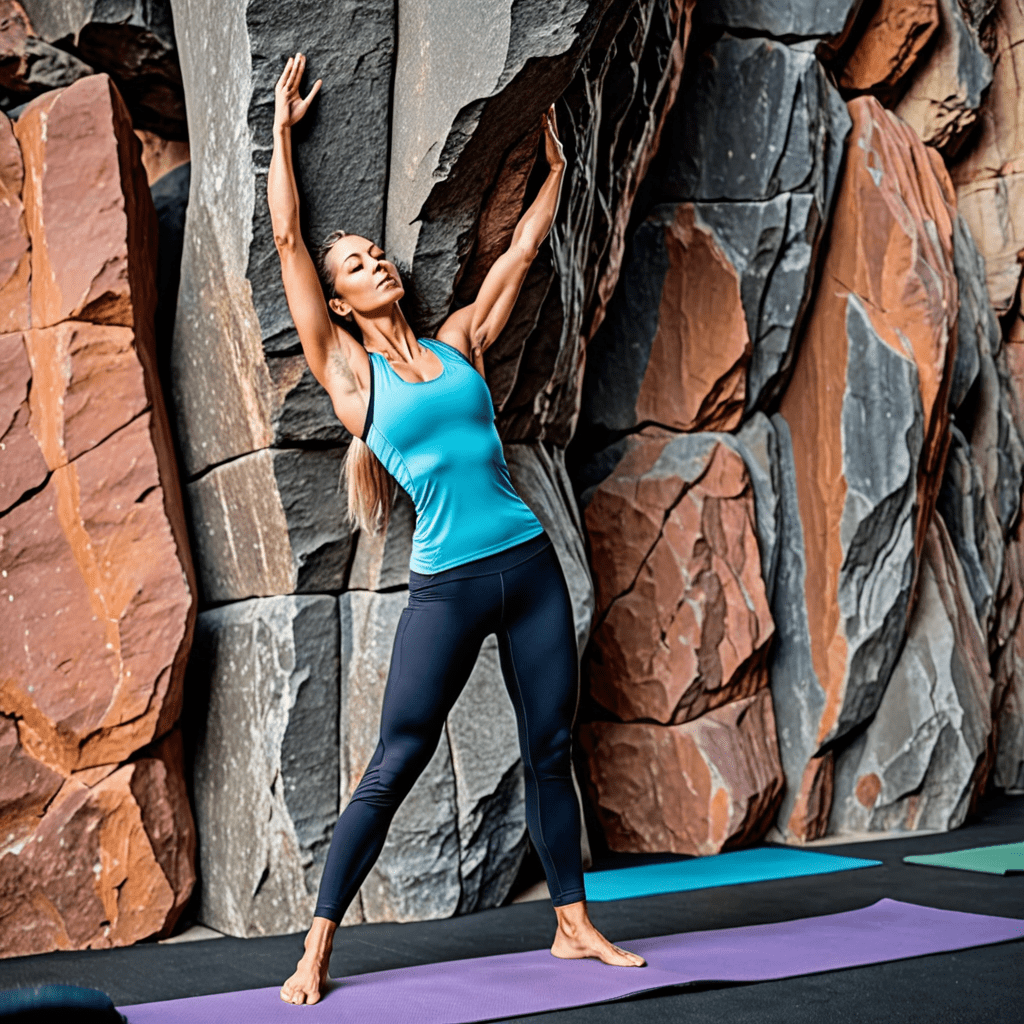
Yoga for Beginners: Understanding the Benefits of Yoga for Rock Climbers
Introduction
Rock climbing is a physically demanding sport that requires strength, flexibility, and mental focus. For rock climbers looking to enhance their performance and prevent injuries, incorporating yoga into their training routine can be highly beneficial. In this article, we will explore the importance of yoga for rock climbers, especially for beginners.
Enhancing Flexibility
Flexibility is crucial for rock climbers to be able to reach holds, make dynamic movements, and prevent muscle strains. Yoga helps improve flexibility by lengthening and stretching muscles, tendons, and ligaments. Poses like Downward Dog, Pigeon Pose, and Forward Fold can target tight areas commonly experienced by climbers, such as the hips, hamstrings, and shoulders.
Building Strength
While rock climbing primarily focuses on upper body and core strength, yoga offers a full-body workout. The practice of yoga involves holding poses that engage various muscle groups, including the arms, core, legs, and back. Poses like Plank, Warrior Pose, and Boat Pose help build strength, endurance, and stability, which are beneficial for rock climbers when tackling challenging routes.
Improving Balance and Stability
Balance is key in rock climbing to maintain control and prevent falls. Yoga poses emphasize stability and balance by requiring practitioners to focus on their alignment and center of gravity. Poses like Tree Pose, Eagle Pose, and Half Moon Pose challenge balance and coordination, helping climbers improve their proprioception and spatial awareness on the rock.
Enhancing Mental Focus
Rock climbing demands intense concentration and mental clarity to assess routes, make precise movements, and overcome fear. Yoga incorporates mindfulness and breath awareness, which can help climbers stay calm, focused, and present during climbs. Practicing yoga can enhance mental resilience, reduce anxiety, and improve the mind-body connection essential for climbing performance.
Preventing Injuries
Injuries are common in rock climbing due to the repetitive stress on joints and muscles. Yoga can help prevent injuries by increasing body awareness, correcting imbalances, and improving overall mobility. By practicing yoga regularly, rock climbers can reduce the risk of strains, sprains, and overuse injuries, ultimately prolonging their climbing longevity.
Conclusion
In conclusion, yoga is a valuable complement to rock climbing for beginners and seasoned climbers alike. By incorporating yoga into their training regimen, rock climbers can improve flexibility, build strength, enhance balance and stability, sharpen mental focus, and reduce the likelihood of injuries. Whether practicing in a studio or supplementing with online classes, integrating yoga into your routine can elevate your climbing performance and overall well-being. Start reaping the benefits of yoga for rock climbing today!
FAQ
What is yoga, and why is it beneficial for rock climbers?
Yoga is a mind-body practice that combines physical poses, controlled breathing, and meditation or relaxation. For rock climbers, yoga can improve flexibility, strength, balance, and mental focus, enhancing performance and reducing the risk of injury.
How can beginners incorporate yoga into their rock climbing routine?
Beginners can start with beginner-friendly yoga classes or online tutorials. It’s essential to focus on poses that target areas like the core, shoulders, and legs to enhance climbing-specific strength and flexibility.
What are some specific yoga poses that are beneficial for rock climbers?
Poses like Downward Dog, Warrior II, Tree Pose, and Pigeon Pose can help improve balance, core strength, and flexibility essential for rock climbing. Incorporating these poses into a regular yoga practice can enhance overall climbing performance.
